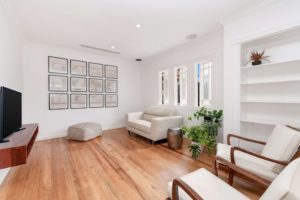OSB3 (Oriented Strand Board 3) is a versatile material that can be utilised for various projects. It has grown in popularity due to its durability, strength and load-bearing capabilities – making it a popular choice for builders worldwide.
But what is an OSB3 board? And what are its key characteristics? In this article, we’ll explore five things you need to know about OSB3 boards to decide if they fit your next project.
Let’s get into it!
#1 How Is OSB3 Made?
It is important to note that the manufacturing process may vary slightly between manufacturers. Different resins and technique variations can result in differences in the final product’s performance and characteristics.
If there is a specific property you need your board to have, it is a good idea to consult your manufacturer’s guidelines or ask an expert for help. For example, the specialists at MGM Timber are always happy to offer advice and information on their OSB3 products.
Several key steps are involved in making OSB3. Some of the most important include:
- Wood Strand Preparation: First, the wood strands must be prepared. Logs from fast-growing trees such as Pine or Aspen are debarked and cut into small strands. The size of these strands may vary depending on the desired characteristics of the finished product.
- Strand Drying: The wood stands are dried to reduce their moisture content. This is important as it ensures the wood has dimensional stability, giving your project better durability. This process usually involves passing each stand through a heated dryer or using a steam-heated tube.
- Resin Application: Once the strands have been dried, they’re mixed with a synthetic resin (usually a phenolic formaldehyde adhesive). This resin is applied to the stands in a blender or mixer, acting as a bonding agent.
- Mat Formation: The resin-coated wood strands are next layered onto a forming line. They are spread out into specific orientations to create a continuous mat. During this process, the stands are aligned carefully into different layers to optimise the structural properties of the final OSB3 board.
- Pressing: The formed mat is subjected to high temperatures and pressures in a hydraulic press. This cures the wood strand and activates the resin, bonding them together.
- Trimming & Sizing: the new board is trimmed and sized to meet requirements. The edges may be profiled or shaped to facilitate easy joining and installation.
- Finishing: Depending on the intended application, the OSB3 board may undergo additional treatments or finishes.
Once the board has been sized and finished, it is ready to be sold to the public. You can find OSB3 at most major building material suppliers in the UK.
#2 What Can You Build With OSB3 Boards?
OSB3 is a versatile building material that can be used in various applications. Some of the most common include:
- Sheathing
- Flooring
- Wall panels
- Roof decking
- Subflooring
- Furniture construction
OSB3 has the advantage of being easily cut and shaped whilst maintaining durability and strength. It is, therefore, an ideal material for various building tasks that require a solid material that is easy to work with.
#3 How Durable Is OSB3?
OSB3 is known for its high structural strength and dimensional stability.
The orientation of the wood strands the boards are made from provides OSB3 with excellent load-bearing capabilities, making it suitable for various applications where strength and stability are crucial.
This makes it particularly popular for subflooring applications, as it can support a good amount of weight and movement over time.
#4 Is OSB3 Suitable For Outside Use?
OSB3 boards are designed to be more moisture-resistant than standard OSB boards. They have enhanced water resistance due to the addition of moisture-resistant resins and wax coatings during the manufacturing process.
However, it is important to note that OSB3 is not completely waterproof and should be protected from prolonged exposure to moisture. It is also important to check the manufacturing guidelines to ensure that the product you buy has been crafted with a moisture-resistant resin and coating.
For outdoor use, it is always recommended to provide adequate surface protection to minimise moisture absorption. This can include applying appropriate waterproof coatings, sealants, or paint systems to protect the board from moisture intrusion.
Regular maintenance and reapplication of protective finishes may be necessary to maintain the board’s integrity.
#5 Can OSB3 Boards Be Painted?
Yes! OSB3 can be painted. However, ensuring the surface is adequately prepped before painting your boards is important.
Start by ensuring the surface is clean and free from dirt, dust, and loose particles. If necessary, lightly sand the surface to create a smooth and even finish. It’s important to note that OSB3 has a textured surface due to its wood strands, so the final painted surface may also have some texture.
You can also use a wood primer to get closer to your desired finish and get more long-lasting results from your paint job. For best results, consult a professional for advice and information on what would work best for your OSB3.
What Will You Build First?
We hope this article has helped answer your question of ‘What is OSB3 board?’ and explained some key ways it can be used and some aspects that make it a fantastic, versatile building material.
With plenty of capabilities, OBS3 boards offer a simple and convenient way to approach your next build. What will your next project be?

